Many people are familiar with Mexican horchata, a creamy, rice based drink. Ecuadorian horchata, however, is very different.
In Ecuador, horchata refers to an herbal tea — an infusion of flowers & aromatic herbs. It is a traditional drink in the Southern part of the country, particularly in the Loja province, where it’s common to find vendors selling the beverage hot in the morning, or to be served a cold glass with almuerzo.
You can find bundles of fresh horchata herbs for sale at the local market. The drink is so popular that dried mixes are available at many tiendas throughout the region too. There’s even a company that sells a bottled horchata.
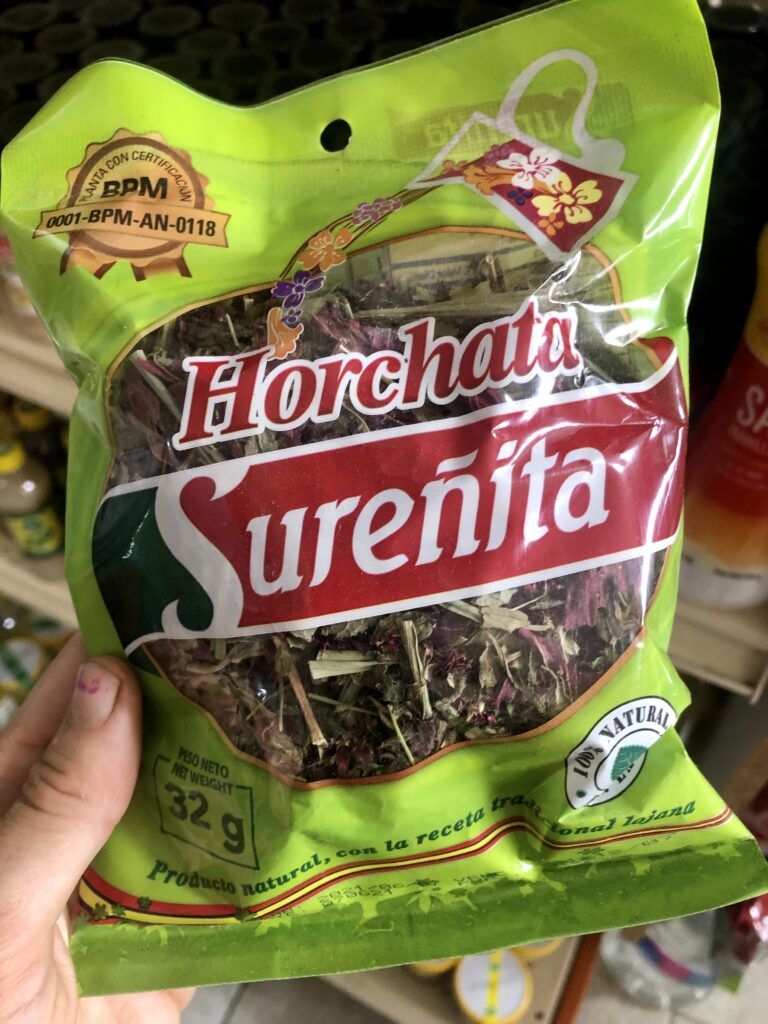
Horchata is made with a blend of different aromatic & medicinal herbs. The specific ingredients vary, but it’s typically a blend of whatever is growing in the garden or can be wild harvested nearby. After brewing, the tea can be sweetened, to taste, with panela (unrefined cane sugar) or honey.
We like to make kombucha with an horchata tea we brew using herbs from our gardens — a probiotic rich and deliciously fizzy take on this traditional beverage.
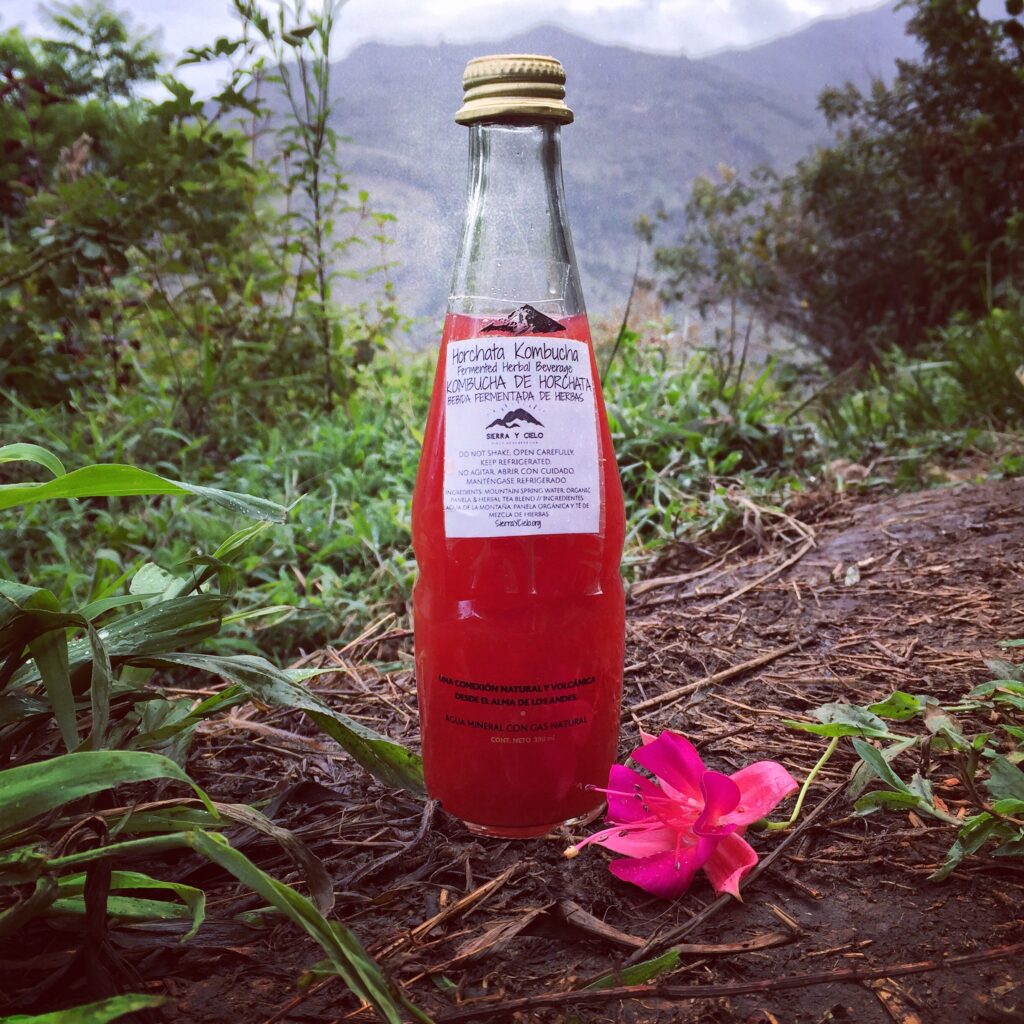
Horchata is a reddish pink color, due to the addition of escansel (Aerva sanguinolenta) or an amaranth variety with red flower clusters (Amaranthus caudatus). Other common ingredients include:
- Roses (Rosa spp.)
- Chamomile (Matricaria recutita)
- Borage (Borago officinalis)
- Horsetail (Equisetum bogotense)
- Lemongrass (Cymbopogon citratus)
- Lemon balm (Melissa officinalis)
- Cedrón — also known as lemon verbena (Aloysia citrodora)
- Basil (Ocimum basilicum)
- Peppermint (Mentha x piperita)
- Spearmint (Mentha spicata)
- Geraniums (Pelargonium spp.)
- Tilo flowers (Sambucus nigra)
- Plantain (Plantago major)
- Violets (Viola odorata)
- Buscapina (Phyla dulcis)
- Fennel (Foeniculum vulgare)
- Sow thistle (Sonchus oleraceus)
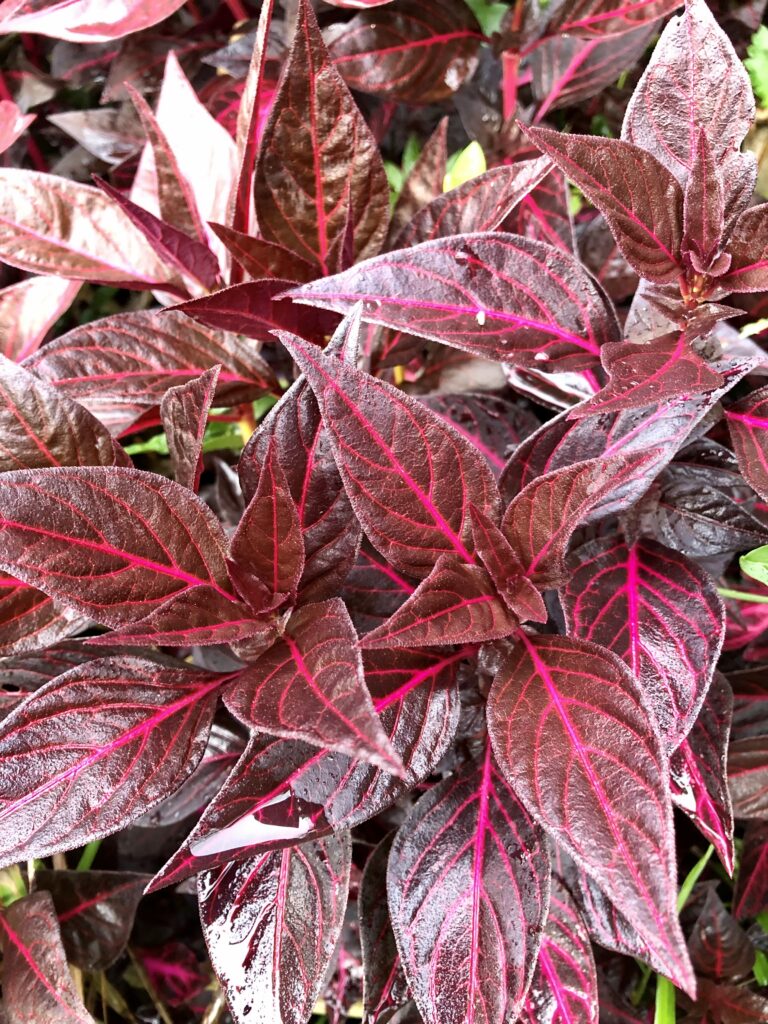
Horchata blends often include a variety of native herbs as well, including:
- Moradilla (Alternanthera porrigens)
- Cucharilla (Oreocallis grandiflora)
- Pena pena (native Fuchsia spp.)
- Shullu (Oenothera rosea)
- Chulco (Oxalis corniculata)
- Congona (Peperomia galioides, P. ilaloensis & P. inaequalifolia)
- Anís de monte (Tagetes filifolia)
- Lechugilla (Gamochaeta americana)
A study of 185 vendors selling horchata herb bunches at 31 traditional markets in Loja province documented 71 different medicinal plant species being sold in the various horchata blends (Rios et al., 2017).
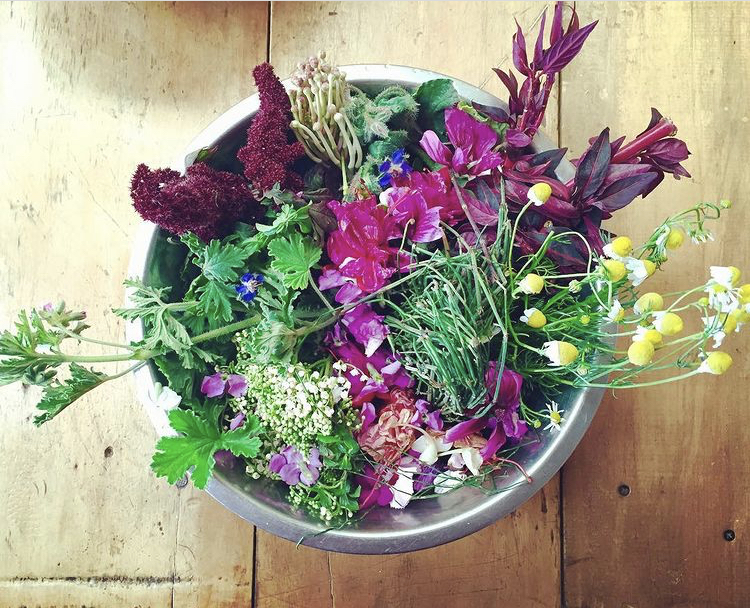
These herbs have a variety of health benefits, including anti-inflammatory, analgesic, diuretic, sedative, tonic, and digestive properties. It was also found that many of the herbs have a detoxifying or purifying effect, and are used to improve blood circulation, blood pressure, heart health and to bring the body into better balance. Rios et al. (2017) say, “It is notable that these therapeutic uses are related to the circulatory and nervous systems, since the intense fuchsia tonality of ‘horchata’ is culturally associated with improving blood quality, spiritual strength and emotional wellbeing.”
In addition to its healing benefits, horchata is an important part of the traditional culture of Southern Ecuador. Horchata is widely consumed by people of all social standings, maintaining traditions of folk medicine & healing herbs as an important part of overall well-being. Rios et al. (2017) observe that “‘horchateras’ and women market vendors are key players for the cultural conservation and persistence of the ‘horchata’ consumption.”
“Women are the principal stakeholders by caring and growing medicinal plant cultivars at their homegardens, selling bunches for ‘horchata,’ and preparing this ancestral drink,” states Rios et al (2017).
“In relation to ethnobotany, women preserve an ancestral tradition linked to the management of medicinal plants, which traverses oral history between mothers and daughters, grandmothers and grandchildren, aunts and nieces, and among other filial bonds related to the female line or matrilineality. Either a glass of cold ‘horchata’ or a cup of hot ‘horchata’ symbolizes a cultural tradition with different time periods. Because of its historical use, ‘horchata’ could become a patrimonial heritage,” they say (Rios et al., 2017).
Ecuadorian horchata is a beverage with vibrant color, delicious aroma & flavor, health boosting benefits, and significant cultural importance. If you’re ever in Southern Ecuador, be sure to try a glass (or two!).
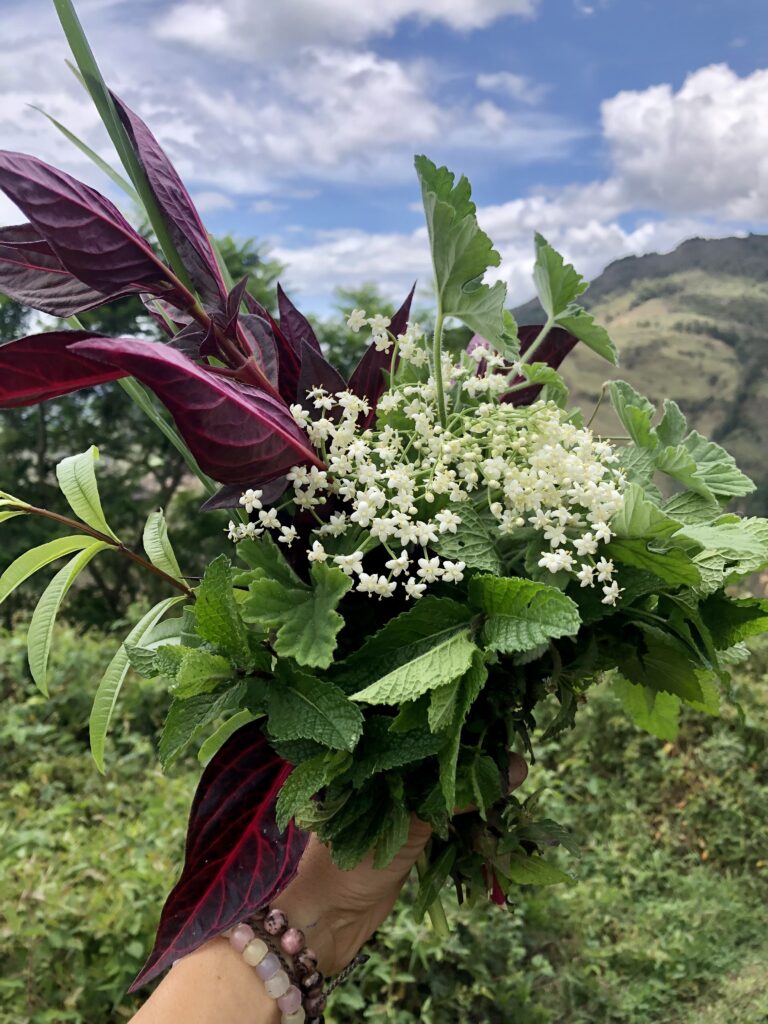
References
Rios, M., Tinitana, F., Jarrín, P., Donoso, N. & Romero-Benavides, J.C. (2017). “Horchata” drink in Southern Ecuador: medicinal plants and people’s wellbeing. Journal of Ethnobiology and Ethnomedicine 13(18). DOI 10.1186/s13002-017-0145-z
Tinitana, F., Rios, M., Romero-Benavides, J. C., de la Cruz Rot, M., & Pardo-de-Santayana, M. (2016). Medicinal plants sold at traditional markets in southern Ecuador. Journal of ethnobiology and ethnomedicine, 12(1), 29. https://doi.org/10.1186/s13002-016-0100-4

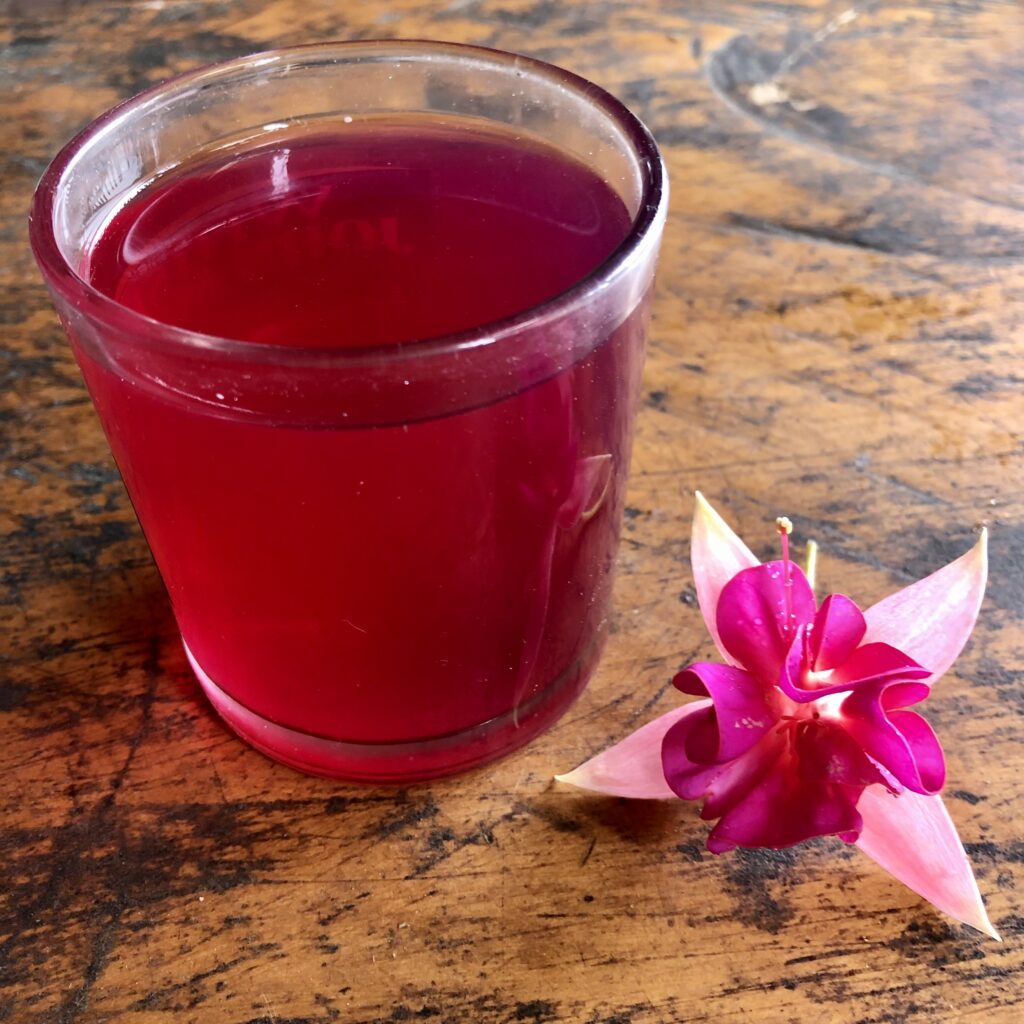
Kristine how delighted was I to land on your informative, useful and beautiful article about the horchata ingredients. Thank you for describing & showing all these amazing medicinal herbs too! Sending you hugs & gratitude as I sip with joy my hot horchata tea freshly made from one of those bundles from the horchateras at the local organic market. <3